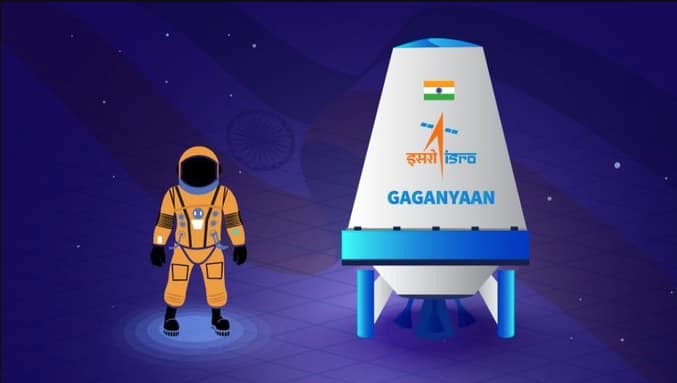India has reached another milestone in its quest for space exploration with the successful test flight of the Gaganyaan Mission. Prime Minister Narendra Modi recently shared his excitement on social media, highlighting how this achievement brings India “one step closer” to its ambitious human spaceflight program. In this blog, we’ll delve into the details of this groundbreaking mission, from its initial hiccup to the significant steps it takes toward achieving the dream of sending Indian astronauts into space.
Gaganyaan’s Successful Test Flight: The Indian Space Research Organisation (ISRO) made headlines with the successful test flight of the Gaganyaan Mission. The launch, conducted from the Satish Dhawan Space Centre (SDSC) in Andhra Pradesh’s Sriharikota, was not without its share of challenges. An initial setback occurred due to an engine ignition glitch, but ISRO’s unwavering determination paid off as the mission resumed successfully at 10 am. This achievement marked a significant milestone for India’s space exploration.
Key Highlights of the Test Flight:
- Crew Escape System: The primary objective of this test flight was to demonstrate the functionality of the Crew Escape System. This critical system ensures the safety of Indian astronauts, providing them with a secure means of escape in case of emergencies during their mission.
- Testing Human Spaceflight Capabilities: The Gaganyaan mission is part of India’s plan to send its first astronauts into space. This successful test flight puts India on track to send a crew of three individuals into a 400-kilometer orbit for a three-day mission, with a safe return to Earth by landing in the Indian Ocean.
Long-Term Goals of the Gaganyaan Mission: India’s space ambitions extend far beyond this initial success. The Gaganyaan mission will serve as a stepping stone for more complex endeavors. Here are some long-term goals:
- Sending Astronauts to Space and the Moon: India is actively training its first astronauts, with plans to send them into space by 2025. The country also has aspirations to reach the Moon by 2040. These goals underscore India’s commitment to space exploration.
- Valuable Lessons for Future Missions: The Gaganyaan Mission will provide ISRO with invaluable lessons and insights necessary for planning and executing future human spaceflight missions. This knowledge will be vital for the success of the Gaganyaan program.
Prime Minister Modi’s Tweet: In his tweet, Prime Minister Narendra Modi expressed his best wishes to the scientists at ISRO. His tweet, “My best wishes to our scientists at Isro,” reflects the nation’s collective pride and appreciation for the achievements in space exploration. The Prime Minister’s support and encouragement further emphasize the significance of this achievement.
Technical Details of the Test Flight: The test flight utilized a single-stage liquid rocket known as the Test Vehicle (TV-D1). This rocket carried the crew module and crew escape systems, including fast-acting solid motors, along with the crew module fairing (CMF) and interface adapters as payloads. The crew module, designed as an unpressurized module, is equipped with systems for deceleration and recovery, such as parachutes, recovery aids, actuation systems, and pyrotechnics. The avionics systems are in a dual redundant mode configuration to ensure reliability.
India’s Gaganyaan Mission test flight marks a remarkable achievement for the nation’s space exploration endeavors. With this successful step, India is moving closer to its dream of sending its astronauts into space and beyond. The mission not only demonstrates India’s technical capabilities but also serves as an inspiration for aspiring space scientists and enthusiasts. As India continues its journey into the cosmos, the sky is not the limit; it’s just the beginning.

